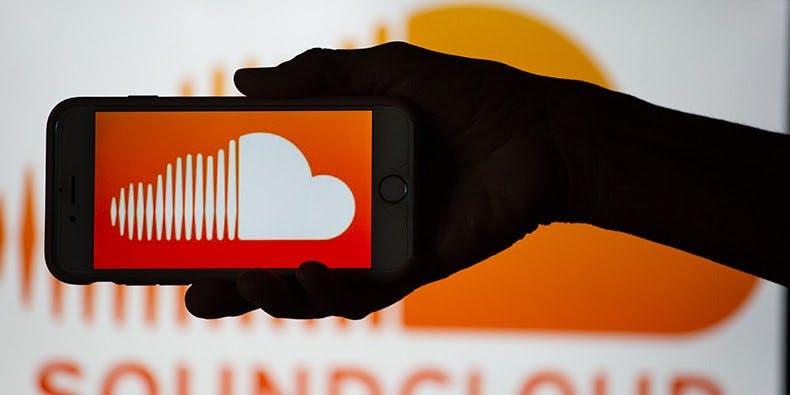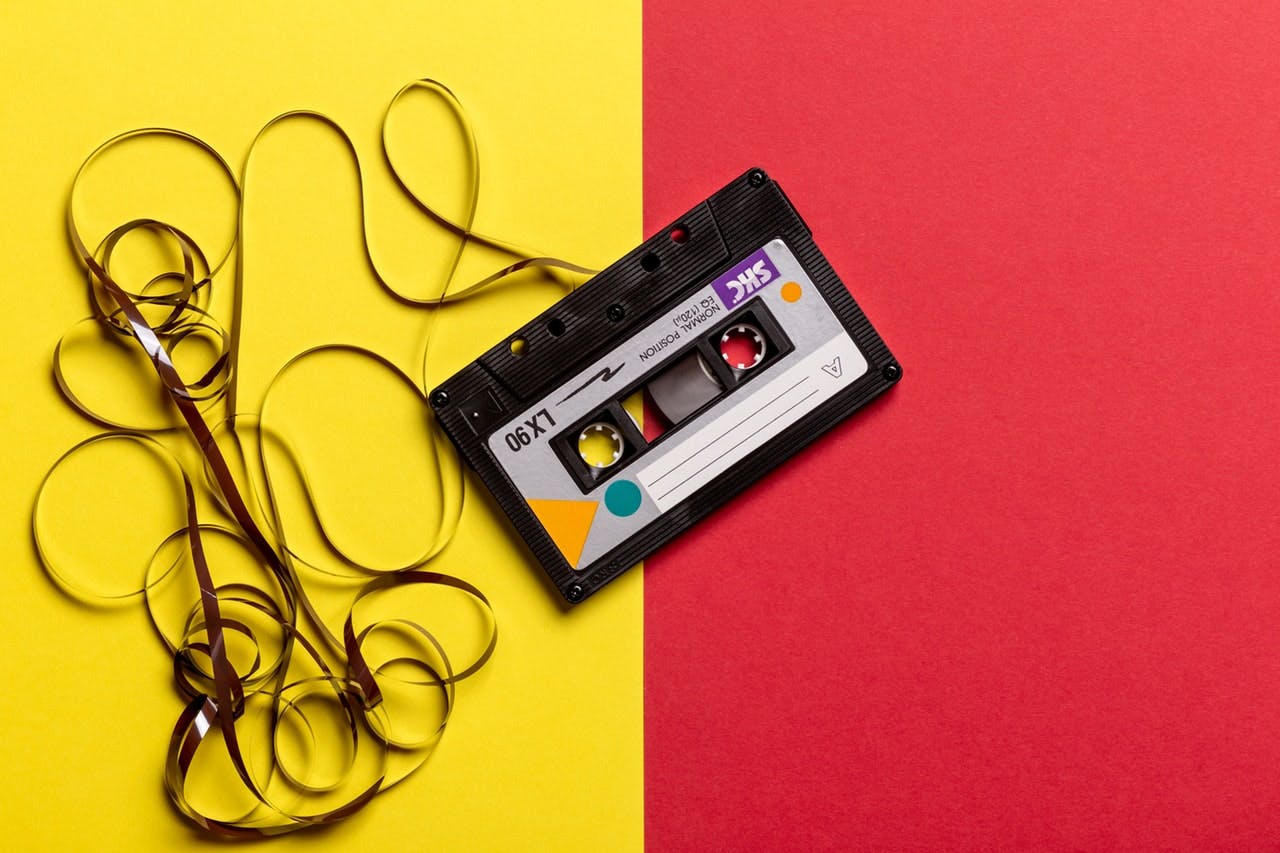Jump to
- Does SoundCloud matter?
- 8 Tips for promoting music on SoundCloud
- 1. Sync up your social media
- 2. Check out your demographics
- 3. Collaborate
- 4. Remix fellow artists
- 5. Interact with others
- 6. Fix your SoundCloud settings
- 7. Fix your SoundCloud and Google SEO
- 8. Go Pro
- How do you know if it’s working?
- Conclusion
SoundCloud has a reputation as a platform for launching careers and finding your first audience. However, with 20 million music creators on the platform, cutting through the noise and getting yourself in front of the audience is still a massive challenge.
Just throwing your music up on SoundCloud and hoping for the best isn’t going to cut it. Instead, what you need is a multi-pronged, cross-platform strategy that utilizes all the analytical, distribution, and marketing tools at your disposal to make the best of the platforms strong suits.
But what are those tools? And what are the steps can you take to make yourself visible on SoundCloud? We put together this guide to give you a comprehensive strategy for getting things off the ground: learn all our tips and tricks of SoundCloud promotion and take your exposure on the platform to the next level.
Does SoundCloud matter?
Yes! Soundсloud is one of the biggest music distribution platforms in the world. With free music access and easy direct upload system, SoundCloud became a harbor for all things DIY and off-center — even though most of the mainstream acts are present on the platform. A lot of artists first gained notoriety and attention on SoundCloud — especially when it comes to electronic music and rap. You know, like XXXTENTATION, Lil Pump, Lil Uzi Vert — a lot of the artists topping the Billboard charts have started by going viral on (or through) SoundCloud. I mean, SoundCloud rap is a widely recognized genre at this point — but if you need more convincing, here's a couple of quick statistics:
Why SoundCloud is important?
- 175 million users & 76 million monthly users (more than Pandora but less than Spotify)
- 180 million tracks uploaded on the platform, with 12 hours uploaded every minute
- 20 million music creators
- 1.2 million creators featured in playlists
With such a broad audience and established community, SoundCloud is an indispensable part of any musician’s marketing strategy.
8 Tips for promoting music on SoundCloud
1. Sync up your social media
The more cohesive and coordinated your social media strategy, the better your music will perform on SoundCloud. There’s a spillover effect to building an audience on different platforms: you upload your music on SoundCloud, release videos on YouTube, develop your visual brand on Instagram and get personal with your fans on Twitter. Each new listener that follows you on one of the platforms is more likely to follow you on another.
Youtube
Uploading your music on YouTube can expose you to new audiences, and it doesn’t always require a music video. Even uploading music with a still picture is better than not uploading at all — some got to 45 million views with a couple of seconds of looped animation. All in all, the most important part is making sure you have a presence on the platform — although music video releases ought to be a part of your marketing mix once you get the things off the ground.
Twitter was a massive platform for SoundCloud rappers back in their day (yes, that’s the expressions we now use to say “two years ago”). The platform’s strong suit is that it allows you to establish two-way communication with your fans. Be engaging, unique, and approachable, and you might get your followers to retweet in dozens sooner than you think. For establishing a connection with your SoundCloud profile, be sure you post 30-second embeds with your new tracks.
Instagram plays a crucial role in establishing your brand and getting your fans to put a face to your name. Besides that, Instagram stories and Instagram Live are perhaps the best places to share your new songs with your following and get some traffic flowing to your SoundCloud page.
2. Check out your demographics
The major DSPs all provide detailed first-party analytics about performance on their platform (including SoundCloud). This data provides critical insight into your audience that should inform your marketing strategy. SoundCloud analytics allows you to access detailed data on how your music performs on the platform — including the demographics of your listenership. This data can help you understand your audience better and optimize your advertising and general marketing campaigns.
3. Collaborate
Collaboration drives the music industry — and getting features with other artists is the oldest trick in the book. Features allow you to exchange audiences and introduce new people to your music. You can collaborate in a couple of different ways. If you produce music yourself, it might be a good idea to sell (or even give away for free) some of your beats to active up-and-coming rappers on Soundcloud — but make sure that your sound will work with their flow and vice versa.
If you’re not a producer, then you still have the option of going for song features. Song features can have a more visible promotional effect — but they also require a more hands-on approach to the collab, working closely with the second artist.
4. Remix fellow artists
Remixing is another form of collaboration and interaction, both with fellow artists and their fanbase. There are a couple of different ways to work remixes into your SoundCloud promotion strategy. First, you can add your unique flair to an already-popular song is a great way to expose your style to new audiences and connect with new fans. Be sure that you get a green light from the artist you’re remixing first though.
Secondly, you can par over a beat that you love from another artist (if you’re a rapper, of course). That’s a great opportunity to make some engaging content — people are more likely to click on a song if it features one of their favorite beats — but don’t expect to monetize it though. It’s “for promotional use only”.
5. Interact with others
There are simpler ways to network in the music world than getting on features or doing remixes. Regularly interacting with both fans and other artists will help you establish your presence on the platform and ultimately expose you to new listeners. Repost, follow, comment, message, and join groups — but stay selective and only engage with content and people you genuinely like. There’s no point in flooding your followers and other artist’s feeds with content just for the sake of it.
6. Fix your SoundCloud settings
There are some simple steps that you can take in your SoundCloud account to boost listenership or even send traffic away to other platforms like Spotify. First off, you can set your content to stream only. That will limit your music’s virality, blocking your listeners from downloading the songs (and re-uploading them across the web) — but on the top side, your stream counts are likely to go up.
Secondly, you can put some of your content behind the paywall — it’s a common practice to have your singles and b-sides freely available on SoundCloud while putting your long-form releases in preview mode. That will push your fans to other platforms, but be careful: all your SoundCloud followers won’t make it to Spotify.
7. Fix your SoundCloud and Google SEO
A critical part of your branding and marketing strategy is to ensure that audiences can quickly identify your music and find you on multiple platforms. How do you expect people to find you when you give them no info on your songs?
Make it CLEAR in your title and tags what your music is. Don’t title your song “djmustard trap remix by lemonademan”. Name it “DJ Mustard - 100 Bands (Trap Remix) - By LemonadeMan”. Make it look good (and easy to read). That will make it either for your fans to find your content, and might even get your music ranking on Google for “DJ Mustard Trap Remix”.
On the topic of Google — they’re trying hard to get you in the search, but you need to work with them. Rename yourself on SoundCloud from “lemonademan1997” to Lemonade Man, or something more professional (with spaces, preferably). Follow the same Song Title example above, and use tags when uploading your music.
8. Go Pro
SoundCloud Pro puts a ton of useful tools in your hands for driving revenue, improving your marketing strategy, and distributing your music. If you’re serious about the platform, then Pro is the way to go. The Pro subscription gives you access to improved analytics, allows you to monetize your content and even get your music from SoundCloud onto all most of the major platforms via a distribution deal.
How do you know if it’s working?
SoundCloud is just one of platforms available to artists. Sure, its analytics will show how you’re doing on the platform itself — but it won’t yield any insight on your strategy and career as a whole. To get a complete view, you need to track dozens of platforms and mediums.
Soundcharts (hey, that’s us!) does exactly that. We aggregate data across all platforms of the music industry, both global and local: from streaming services and social media to radio airplay across thouthands of stations. Soundcharts provides its users with the 360° view of an artist’s career, turning raw data into actionable, intuitive real-time insights. Find out more.
Conclusion
Some of these steps are very simple, like changing your SoundCloud settings. Others will require outreach and hard work, like collaborating with other artists. But with 12 hours of music uploaded to SoundCloud each minute, hard work is exactly what it will take to distinguish yourself from the masses. In the end, it comes down to the quality of your music, but a couple of tips and tricks above can go a long way in getting your SoundCloud profile going.



